
Amazon Aquaculture Initiative
Native Species
Aquaculture
Photo Essay
Exchange Report
Brochure
ATF article
Responses to Oil
Enviro Monitoring
Plan Colombia
Indigenous Rights
The Secoya People
Project History
How You Can Help
Our Funders
ISIS Publications
Links
Contact us
Search
Projects Overview
MilWaste Program
Amazon Project
Quantum Physics
Seminars
Science Dialogue
Recoding Life
ISIS Fellows
Native species:
The Amazon and its tributaries have the world's greatest diversity of fresh water fish species. The introduction of non-native species is therefore not just unnecessary; such introductions threaten the rich natural resources of the region. In contrast, the development of aquaculture of native species can provide local communities with both an important food source and with new skills that have economic value. By designing an indigenous aquaculture system, the Amazonian peoples take ownership of the technology and reduce their dependence on external aid.
A few examples of the many varieties fish with potential for aquaculture are illustrated here:
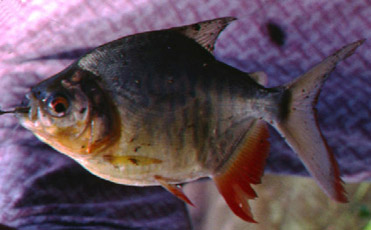 The fruit eating cachama or paco (Piaractus brachypomus) is perhaps the Amazonian fish that has received most attention from Aquaculturists. Raised in Secoya ponds, the species requires induced spawning in laboratories to reproduce. |
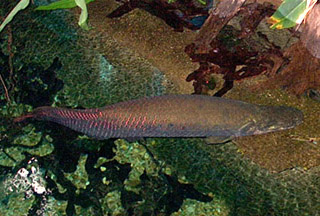 Paiche (Arapaima gigas) is the world's largest freshwater fish. Although it is being farmed in Brazil and Peru (where we were excited to see these magnificent fish), its need for large quantities of high-protein feed makes it an expensive fish which, if overproduced, could easily consume more pounds of fish than it provides to the market. |
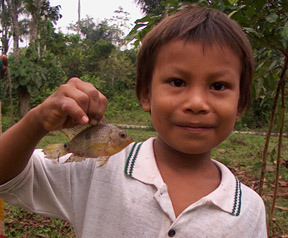 |
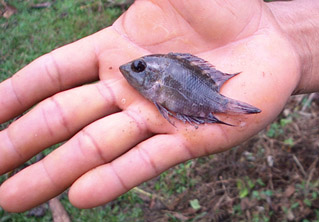 |
| Many native cichlid species found in flood plain lakes, including these called soco huani and yaje huani by the Secoya who raise them, have great aquaculture potential: they reproduce rapidly in fish ponds and grow well in natural conditions. | |
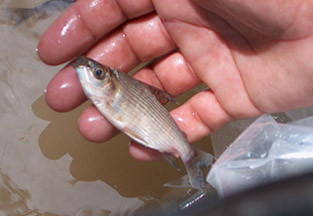 Bocachico (Prochilodus nigricans) is a good candidate for farming with other fish in polycultures because, as a detritivore, it can benefit from food resources other fish won't eat. |
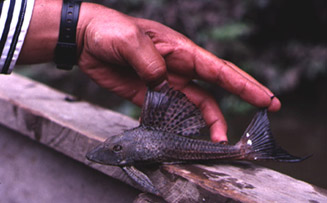 The suckermouth catfish, (Plecostomus) called Carachama in Spanish, is a tasty if bony fish. Another detritivore, it is also a good candidate for polyculture. |
Essay Intro
Native Species
Local Resources
From Fish Pond to Dinner Table
Fish Farmer Research